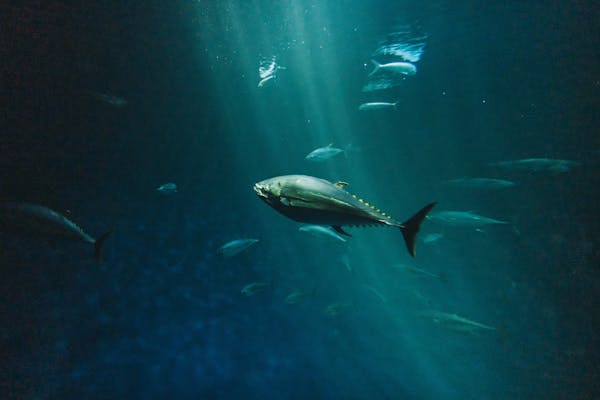Latest ISSF report shows 88% of global tuna catch comes from healthy stocks, signaling progress despite ongoing overfishing challenges

In a sign of improving the sustainability of fisheries, the latest report from the International Seafood Sustainability Foundation (ISSF) reveals that 88 percent of the world’s commercial tuna catch now comes from stocks deemed “healthy.” This marks a notable improvement from March 2024, when the figure stood at 86 percent.
The report, released in November 2024, shows that overfished tuna stocks remain steady at 10 percent, while the share from stocks at an intermediate level of abundance has decreased sharply, falling from 4 percent to just 2 percent. While challenges remain, the data signals continued progress in efforts to ensure the long-term health of tuna fisheries worldwide.
The latest report also highlights several changes in the status of tuna stocks since March 2024. Notably, the abundance and fishing mortality ratings for Eastern Pacific Ocean bigeye tuna have improved from yellow to green, indicating healthier stocks and more sustainable fishing practices. Similarly, the fishing mortality rating for Pacific Ocean bluefin tuna has also moved from yellow to green.
On the other hand, the status of the Atlantic Ocean Mediterranean albacore has shifted, with both abundance and fishing mortality ratings changing from orange to yellow. However, there remains significant uncertainty around the status of this stock, largely due to inadequate monitoring and unreliable fishery data.
Fisheries management help tunas, billfishes recover, but extinction risk of sharks rises
The report highlights several tuna stocks still considered overfished or subject to overfishing. Indian Ocean bigeye and yellowfin remain overfished and continue to face overfishing, unchanged since March 2024. Similarly, the Pacific Ocean bluefin also remains overfished, with no change in its status.
Since March 2024, key updates in Regional Fisheries Management Organization (RFMO) stock management include the Indian Ocean Tuna Commission’s (IOTC) adoption of a new procedure for skipjack tuna, aimed at reversing overcatch and ensuring long-term sustainability. The IOTC and the Inter-American Tropical Tuna Commission (IATTC) also rolled out updated measures for fish aggregating devices (FADs), improving their management, reducing environmental impacts and enhancing monitoring at sea.
ISSF publishes its signature Status of the Stocks report several times yearly using the most current scientific data on 23 major commercial tuna stocks. The Status of the Stocks report is reviewed by the ISSF Scientific Advisory Committee (SAC), which provides advice on its content. The report does not advocate any particular seafood purchase decisions.
Now that you've reached the end of the article ...
… please consider supporting GSA’s mission to advance responsible seafood practices through education, advocacy and third-party assurances. The Advocate aims to document the evolution of responsible seafood practices and share the expansive knowledge of our vast network of contributors.
By becoming a Global Seafood Alliance member, you’re ensuring that all of the pre-competitive work we do through member benefits, resources and events can continue. Individual membership costs just $50 a year.
Not a GSA member? Join us.
Author
Tagged With
Related Posts

Fisheries
ICCAT adopts stronger measures for tuna and swordfish fisheries management
New measures enhance responsible fisheries management of tuna and swordfish, emphasizing science, conservation and small-scale fisheries.

Fisheries
ISSF: 99.1% of participating tuna companies comply with conservation measures
ISSF’s latest report shows 99.1 percent of participating tuna companies comply with 33 conservation measures.

Fisheries
ISSF: Nearly 50 percent of tuna stocks are subject to overfishing
The latest ISSF report reveals that nearly half of major tuna stocks successfully avoid overfishing and meet target biomass levels.

Fisheries
Guide shows commercial tuna fishers how to build net-free, biodegradable fish aggregating devices
A new net-free, nearly 100 percent biodegradable design for fish aggregating devices could help minimize the impact of commercial tuna fishing.



